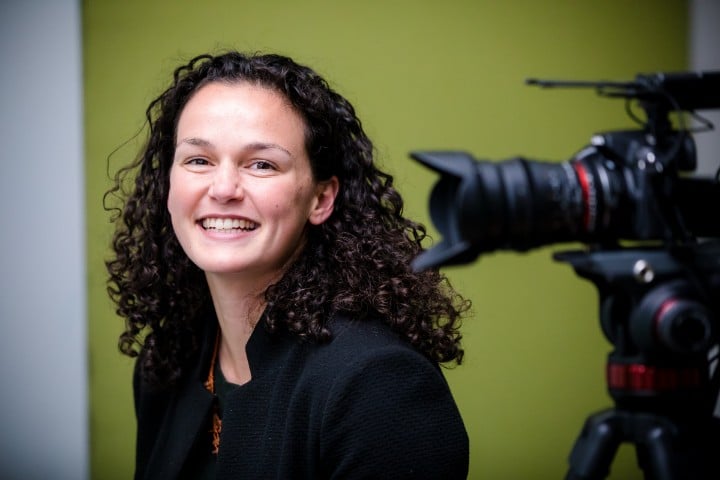My Day in The Life of a Recruiter
As a new grad working in the employer branding industry, I can break my journey thus far into three stages. The first I fondly entitle, “Learning About What the Heck I’m Supposed to be Doing,” which consisted of a crash course on Stories Inc. and how we provide value to our clients. Check.
The second stage, “Actually Doing What I’m Supposed to be Doing,” had a nickname used only among family and close friends: “Fake It Til I Make It.” Anxious at first to manage projects, with experience I became quite good at Actually Doing What I’m Supposed to be Doing — creating content to help candidates choose whether or not to join a company, and for companies to best show what they can offer.
My confidence gradually grew (shocker, I know). I didn’t have to fake it anymore.
Now I’m entering stage three (name suggestions welcome in the comments!) and trying to grasp the employer branding ecosystem as a whole. I create recruitment marketing content that companies use to attract and inform candidates. But what about the other players in the field? The people forging relationships with applicants and maintaining them throughout the candidate experience? How do we all fit together?
I began with the life of a recruiter…
If there’s one thing I learned in stages one and two, the best way to get to the truth of the matter is to go straight to the source. So I was off to shadow a local corporate recruiter from a large financial services company to learn her story, the obstacles she faces, and (hopefully) gain some perspective to make myself a better recruitment marketer. Here’s what I learned:
-
It’s more than getting a butt in a seat
Throughout the shadow day, Sarah interviewed current undergraduates for her company’s prestigious one-year licensing and training program. While in the program, members study and pass their licensing exams. After they do, they then receive top-notch training for a year to prepare for their official positions. Not a bad gig, to say the least.
The hard part for Sarah? With the headquarters in a rural suburb of a desirable city, many individuals take off to the city, accreditations in tow, long before the three-year period of retention that justifies the upfront investment.
In the quest for long-term fit, Sarah approached this location challenge with total transparency. Having lived in the town in question she spoke authentically from her experiences; just as we try to focus on stories and specific examples in our content, too.
And the transparency worked – after hearing Sarah’s side of things, one candidate revealed their long-term goal of working in the city. Better now than a year down the line; this recruiter valued long-term retention over right-now fit.
-
Transparency can sometimes take some planning
In addition to listening in on phone interviews, I learned a lot just from our conversations throughout the day. Sarah described how public, company-wide decisions can trickle down and affect her day-to-day conversations with candidates. In her organization’s case, the company offered generous severance packages to certain team members to shift the company towards their future culture goals.
Candidates had lots of questions in the following weeks, worried that, should they join the organization, they might be given an early severance option, too. Often it was Sarah and her peers on the front lines who fielded these concerns, having to interpret and communicate the situation with a positive spin and a smile (even if candidates couldn’t see it over the phone:) ).
These conversations were difficult. With some collaboration between recruiting and leadership, perhaps they could better anticipate candidate reactions before the news is announced. Then, the talent team is prepared to respond thoughtfully and consistently to reassure candidates, rather than having to make it up as they go along.
-
You’re the keeper of the culture(s)
The final obstacle I encountered came from a question I myself asked: how do you respond when candidates ask about company culture?
Sarah’s answer surprised me (though I’m sure it wouldn’t have to an experienced recruiter) – the answer depends on which business unit/team/role she’s recruiting the candidate for.
Yes, an overarching culture in the company exists. But Sarah is responsible for recruiting for multiple teams, and has come to realize that “culture” is both universal and specific. It can vary between geographic locations, broader units, and specific roles. And it’s constantly evolving.
Sarah’s challenge is understanding the nuances of all these different cultures (hard) and how then to best communicate this in a personalized way to the candidate she’s speaking with (harder).
And in Sarah’s next breath: “I’d love to have content unique to each team that really painted the picture to candidates of the environment they’d be getting into.”
Aha! Hey, that’s me!
Now back to the recruitment marketing world…
…with newfound respect for the recruiting profession and a better understanding of how we all fit together. While one day in the life of a recruiter is only a quick view into the recruiting world, it demonstrated to me the challenges that come with being on the candidate front lines, and how I can better support them in the content that I create.
First step into stage three was a success! Looking forward to what comes next!


